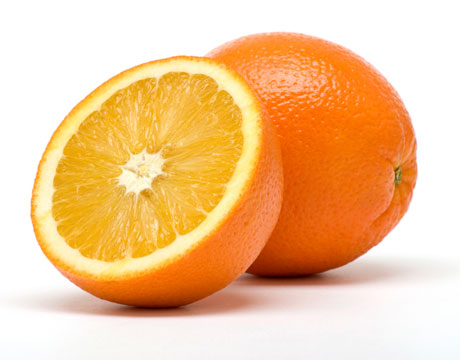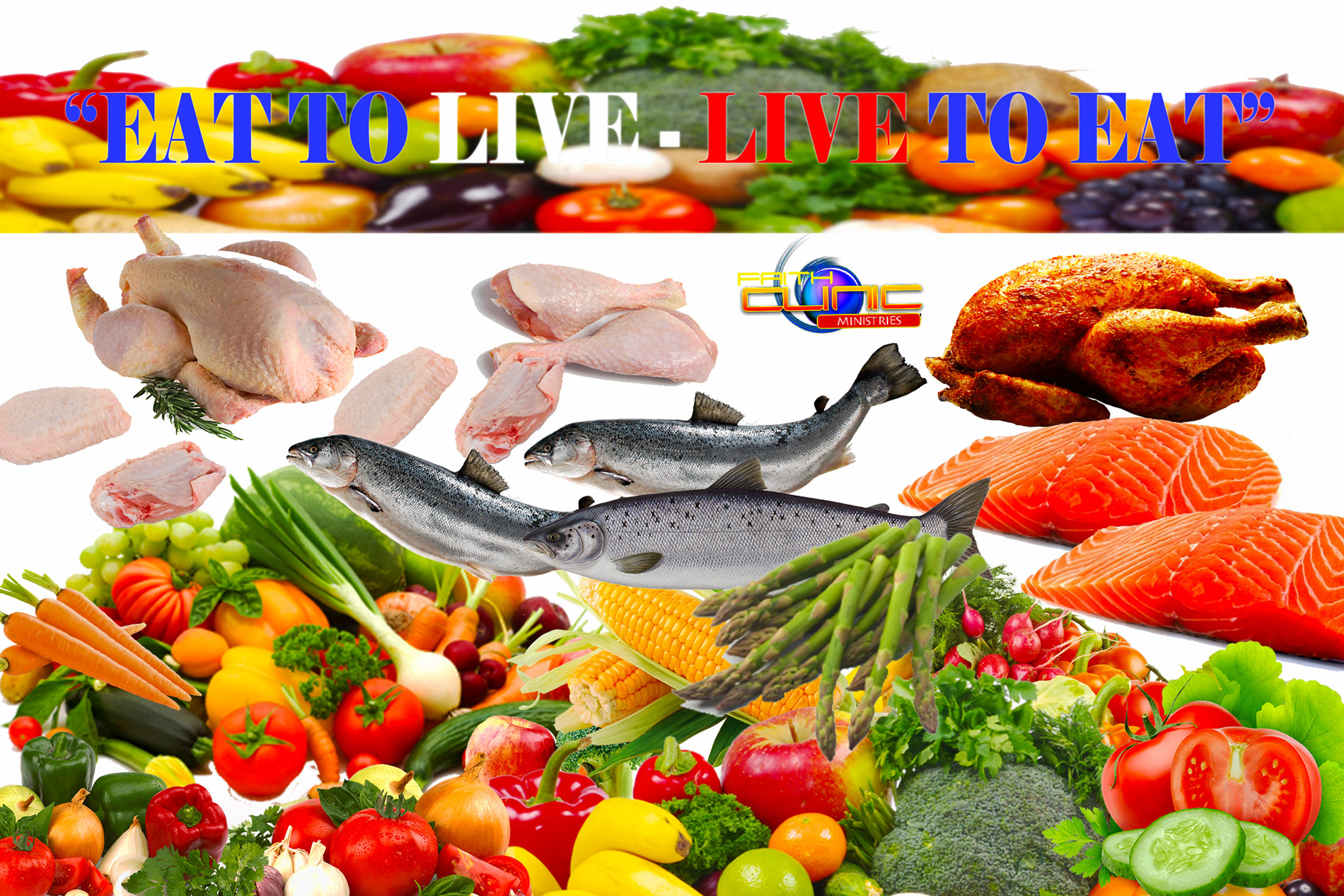Healthy Living 2016 Eating 2000 Exercise 30 Pray & Study 1212
“EAT TO LIVE; LIVE TO EAT!”
“Healthy Thinking, Eating, And Exercise”

 Meditate on the Word!
Meditate on the Word!
“Eat To Live; Live To Eat” is a diet and exercise program started here at Faith Clinic several years ago. As a result, some members have experienced great success enabling some to drastically lose weight and others to become more healthy; including the elimination of diabetes type 2. Get ready to “add years to your life and life to your years” as you learn how to “Eat to Live; Live To Eat” Program that will be featured on this site.
Eat-To-Live-Live-To-Eat is Copy Righted By Dr. Lee A. Simpson ©2016 All Rights Reserved!
THE IMPACT OF NUTRITION ON YOUR HEALTH
Unhealthy eating habits have contributed to the obesity epidemic in the United States: about one-third of U.S. adults (33.8%) are obese and approximately 17% (or 12.5 million) of children and adolescents aged 2—19 years are obese.1 Even for people at a healthy weight, a poor diet is associated with major health risks that can cause illness and even death. These include heart disease, hypertension (high blood pressure), type 2 diabetes, osteoporosis, and certain types of cancer. By making smart food choices, you can help protect yourself from these health problems.
The risk factors for adult chronic diseases, like hypertension and type 2 diabetes, are increasingly seen in younger ages, often a result of unhealthy eating habits and increased weight gain. Dietary habits established in childhood often carry into adulthood, so teaching children how to eat healthy at a young age will help them stay healthy throughout their life.
The link between good nutrition and healthy weight, reduced chronic disease risk, and overall health is too important to ignore. By taking steps to eat healthy, you’ll be on your way to getting the nutrients your body needs to stay healthy, active, and strong. As with physical activity, making small changes in your diet can go a long way, and it’s easier than you think!
You know that healthy habits make sense, but did you ever stop to think why you practice them? Research shows that the impact of good health on your quality of life is far-reaching, regardless of your age, sex, or physical ability. Check out these five qualities that good health promotes.
Controls Weight
Eating right and exercising regularly can help you avoid excess weight gain and maintain a healthy weight. According to the Mayo Clinic, you can obtain benefits of exercise by being active in simple ways throughout the day. For example, walk instead of driving or take the stairs instead of the elevator.
Eating a balanced, calorie-managed diet can also help control weight. When you start the day with a healthy breakfast, you may avoid becoming overly hungry later, which could send you running to get fast food before lunch, says the American Dietetic Association (ADA). The ADA also recommends incorporating at least five servings of fruits and vegetables per day—which are low in calories and high in nutrients—in to your diet to help with weight control.
Improves Mood
Doing right by your body pays off for your mind as well. The Mayo Clinic notes that physical activity stimulates brain chemicals that often leave you feeling both happier and more relaxed. Eating a healthy diet as well as exercising can lead to a better physique, so you may also feel better about your appearance, which can boost your confidence and self-esteem. The American Council on Exercise reports that the short-term benefits of exercise include decreased stress and ability to think better.
It’s not just diet and exercise that lead to improved mood. According to a study published in the American Journal of Health Behaviour, another healthy habit that leads to better mental health is making social connections. Whether it’s volunteering, joining a club, or attending a movie, communal activities help improve mood and mental functioning by keeping the mind active and serotonin levels balanced, says the American Academy of Family Physicians.
Combats Diseases
Healthy habits can help prevent certain health conditions—such as heart disease, stroke, and high blood pressure—by helping to keep certain biomarkers, such as cholesterol and blood pressure, within their targets. This combination keeps your blood flowing smoothly, decreasing your risk of cardiovascular diseases. The Mayo Clinic says that regular physical activity and proper diet can help you prevent or manage a wide range of other health problems, including metabolic syndrome, diabetes, depression, certain types of cancer, and arthritis.
Boosts Energy
We’ve all experienced that lethargic feeling we get after eating too much unhealthly food. When you eat a balanced diet including whole grains, lean meats, low-fat dairy products, and fruits and vegetables, your body has the fuel that it needs to manage your energy level.
Regular physical exercise also improves muscle strength and boosts endurance, giving you more energy, says the Mayo Clinic. Exercise helps deliver oxygen and nutrients to your tissues and gets your cardiovascular system working more efficiently so that you have more energy to go about your daily activities. It also helps boost energy by promoting better sleep–helping you fall asleep faster and deepening your sleep.
Improves Longevity
When you practice healthy habits, you boost your chances of a longer life. The American Council on Exercise reported on an eight-year study of 13,000 people. The study showed that those who walked just 30 minutes each day significantly reduced their chances of dying prematurely, compared with those who exercised infrequently. Looking forward to more time with loved ones is reason enough to keep walking.
“SUPER FOODS”
Eat Your Way Health
Fruits and vegetables are great for your health—and even better for your waistline. But some fresh foods are more powerful than others. Superfoods have more than their fair share of vitamins, minerals, and disease-fighting nutrients. Pack your meals with a nutritional punch by adding these wholesome choices to your diet.
 Alfalfa sprouts
Alfalfa sprouts
Why they’re super: One cup of alfalfa sprouts has less than 10 calories, is virtually fat-free, and contains phytochemicals called saponins, which may protect against cancer and help lower cholesterol.
How to enjoy them: Enjoy their fresh, earthy crunch in salads or sandwiches, or atop a lean turkey or veggie burger.
 Apples
Apples
Why they’re super: Apples are the richest fruit source of pectin, a soluble fiber that has been shown to lower blood pressure, reduce cholesterol, decrease the risk of colon and breast cancers, and maybe even lessen the severity of diabetes.
How to enjoy them: Try throwing a few slices on your favorite sandwich or toss with field greens, toasted pecans, and a light vinaigrette for a delicious salad. With so many varieties available, you’ll never get bored finding new ways to incorporate them into your daily diet.
 Avocados
Avocados
Why they’re super: Just one half of a medium-size avocado contains more than 4 grams of fiber and 15% of your recommended daily folate intake. Cholesterol-free and rich in monounsaturated fats and potassium, avocados are also a powerhouse for heart health.
How to enjoy them: Use avocados as the base for a creamy homemade sandwich spread, or add a few chunks to your favorite salsa for a simple and delicious way to dress up grilled chicken or fish.
 Beets
Beets
Why they’re super: Beets are loaded with antioxidants and have been found to protect against cancer, heart disease, and inflammation. Naturally sweet and full of fiber and vitamin C, beets make a delicious and nutrient-packed addition to any meal.
How to enjoy them: Try finely grated raw beets in your salads or roast them along with sweet potatoes and parsnips for a colorful and flavorful side-dish—just keep in mind that certain cooking methods (like boiling) may decrease their nutritional value. And don’t forget about the leafy green tops, which are rich in iron and folate, and can be prepared much like their cousins, Swiss chard and spinach.
 Cranberries
Cranberries
Why they’re super: Cranberries are renowned for protecting against urinary tract infections, but did you also know they may improve blood cholesterol and aid in recovery from strokes? Cranberry juice has also been shown to make cancer drugs more potent.
How to enjoy them: Although available frozen year-round, enjoy these tart and tangy berries fresh during their peak season from October through December.
 Flaxseed
Flaxseed
Why it’s super: Not only does flaxseed lower blood cholesterol and reduce the risk of heart attack, but it is also a rich source of lignan, a powerful antioxidant that may be a powerful ally against disease and certain cancers, especially breast cancer. Just 2 tablespoons of ground seeds (which are digested more efficiently than whole seeds) contain about 20% of the recommended daily fiber* intake and more than 100% of the recommended intake for inflammation-fighting omega-3 fatty acids.
How to enjoy it: Add ground flaxseed to baked goods for a nutty flavor or sprinkle it on top of your favorite cereal. It’s also delicious when blended with yogurt and fresh fruit for a tasty smoothie.
*One word of caution: Incorporate flaxseed into your diet gradually as it can have a laxative effect.
 Oranges
Oranges
Why they’re super: Just one medium orange (think tennis ball) supplies all your daily vitamin C, which is a dynamite immunity booster and cancer fighter. And consuming vitamin C is best done in its natural form: Italian researchers also found that test subjects hadgreater antioxidant protection after drinking orange juiceversus vitamin C–fortified water. Plus, this sweet and tangy fruit is a good source of fiber, potassium, calcium, folate, and other B vitamins.
How to enjoy them: The tangy taste of oranges makes a great combination with other strong flavors, such as ginger and honey. Put them on salads, or use them in marinades and sauces for meats.
 Papayas
Papayas
Why they’re super: Trying to get more vitamin C in your diet? One cup of papaya cubes supplies more than 100% of your daily requirement, as well as a hefty dose of potassium and folate. It is also a good source of vitamins A and E, two powerful antioxidants that protect against heart disease and colon cancer.
How to enjoy them: Savor the rich, buttery flesh of this tropical fruit in smoothies and salads, or simply scoop it out of the shell with a spoon.
 Pumpkins
Pumpkins
Why they’re super: This hearty, fiber-rich squash is packed with beta-carotene (converted to vitamin A in the body), which reduces the risk of developing lung cancer. The antioxidant activity of this vitamin combined with potassium, which may help prevent high blood pressure, makes it a nutritional superstar.
How to enjoy them: If you prepare a whole squash, toast the seeds for a delicious snack containing heart-healthy fats. The sweet taste and moist texture makes it ideal for desserts.
 Quinoa
Quinoa
Why it’s super: Packed with a variety of nutrients, including iron and copper, it’s no wonder the Incas deemed this ancient seed “the mother of all grains.” Quinoa contains all the essential amino acids, making it a complete protein (perfect for vegans and vegetarians). It is also a great source of magnesium, which relaxes blood vessels and has been found to reduce the frequency of migraines. Researchers have found that consuming dietary fiber, specifically from whole-grain products such as quinoa, reduces the risk of high blood pressure and heart attack.
How to enjoy it: Keep your ticker in top shape by substituting quinoa for rice or pasta in your next meal. It makes a great base for seafood dishes and mixes well with beans.
 Raspberries
Raspberries
Why they’re super: Tart, sweet, and incredibly juicy, just one half cup of these berries provides a whopping 4 grams of fiber and more than 25% of the daily recommended intake for both vitamin C and manganese. Raspberries also contain a powerful arsenal of antioxidants, including members of the anthocyanin family, which give raspberries their ruby-red hue and antimicrobial properties.
How to enjoy them: Try a few berries with your morning cereal or use them to add flavor to a green salad.
 Spinach
Spinach
Why it’s super: Powerful antioxidants in spinach have been found to combat a variety of cancers, including ovarian, breast, and colon cancers. And it’s good for the noggin: Research indicates that spinach reduces the decline in brain function associated with aging and protects the heart from cardiovascular disease. Although it contains relatively high amounts of iron and calcium, oxalate compounds bind to these minerals and diminish their absorption.
How to enjoy it: Spinach has a mild flavor, so spice it up with garlic, olive oil, and onions.
 Sweet potatoes
Sweet potatoes
Why they’re super: Need a beta-carotene fix? Just one medium sweet potato packs over four times the recommended daily amount. These tasty tubers are also rich in potassium, inflammation-fighting vitamin C, and vitamin B6, which may prevent clogged arteries.
How to enjoy them: Boiling sweet potatoes may cause some of the water-soluble vitamins to leach out, so try them baked, roasted, or cubed, and added to soups or stews. If you need a boost of fiber, make sure to leave the skins on.
 Turkey
Turkey
Why it’s super: A 4-ounce portion of turkey breast meat contains almost 50% of your daily selenium, a trace mineral that plays essential roles in immune function and antioxidant defense. Despite the claim that turkey meat causes drowsiness during the holidays, it actually contains high amounts of niacin and vitamin B6, which are important for efficient energy production and blood-sugar regulation.
How to enjoy it: If you roast a whole bird, make sure to remove any skin, which is full of saturated fat; try substituting ground all-white-meat turkey breast for ground beef in your favorite hamburger recipe.
 Walnuts
Walnuts
Why they’re super: One-quarter cup of walnuts supplies 90% of the daily recommended amount of omega-3 fatty acids, which aid in everything from maintaining cognitive function, to improving cholesterol and blood pressure.
How to enjoy them: Toss a few toasted walnut halves on your oatmeal (another heart-healthy superfood) or try them on your favorite salad for a tasty crunch.
 Watercress
Watercress
Why it’s super: Just 1 cup of watercress supplies nearly 100% of a woman’s recommended daily amount of vitamin K, which has been shown to prevent hardening of the arteries and is essential for strong bones. It is also a good source of vitamin A, a potent antioxidant.
How to enjoy it: Try these peppery leaves in place of lettuce in salads or sandwiches, or toss them in a quick stir-fry or soup.
 Yogurt
Yogurt
Why it’s super: Yogurt contains probiotics, which are bacteria that live in the intestine, aid in digestion, boost the immune system, diminish bad breath, and are even associated with longer life spans. A 1-cup serving also supplies one-third of your daily calcium requirement, as well as 14 grams of satisfying protein.
How to enjoy it: Opt for low-fat or nonfat versions to minimize saturated fat, and try substituting plain yogurt for a healthier alternative to sour cream. Lactose intolerant? Look for soy or rice milk varieties.

